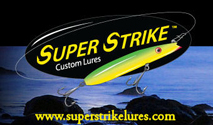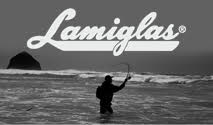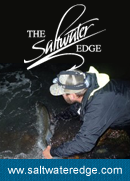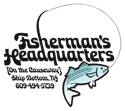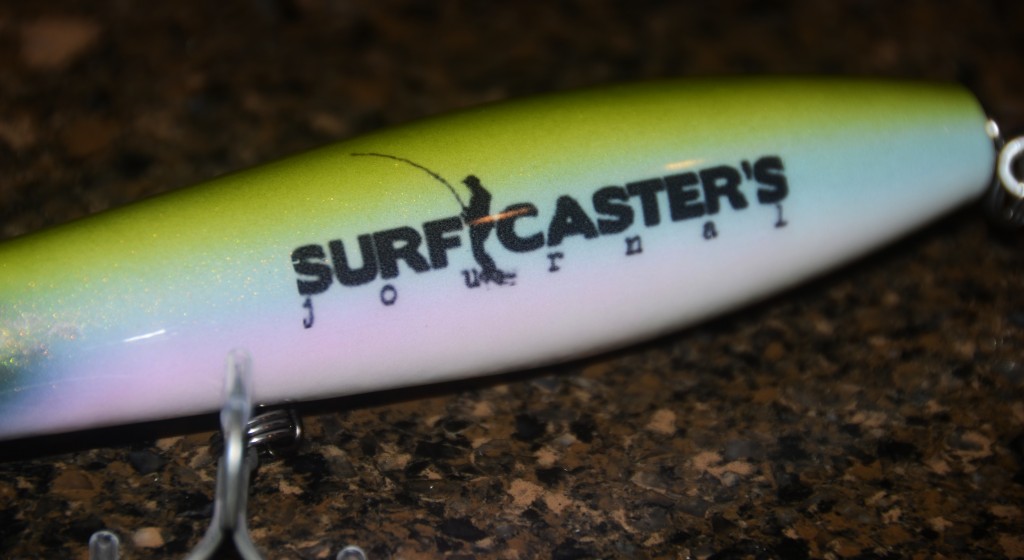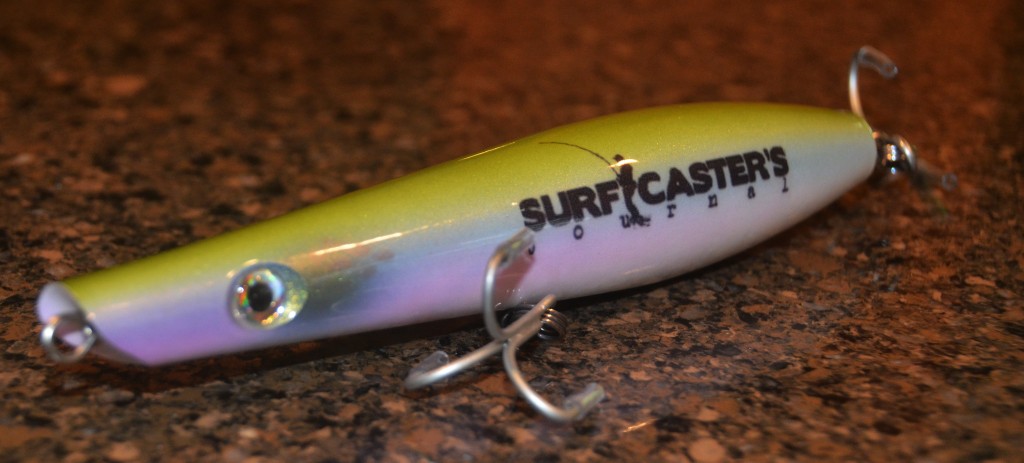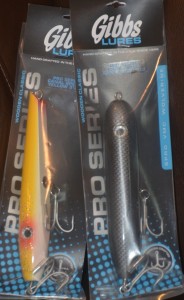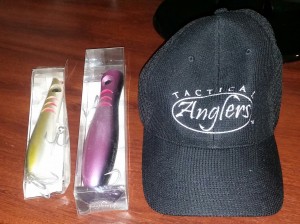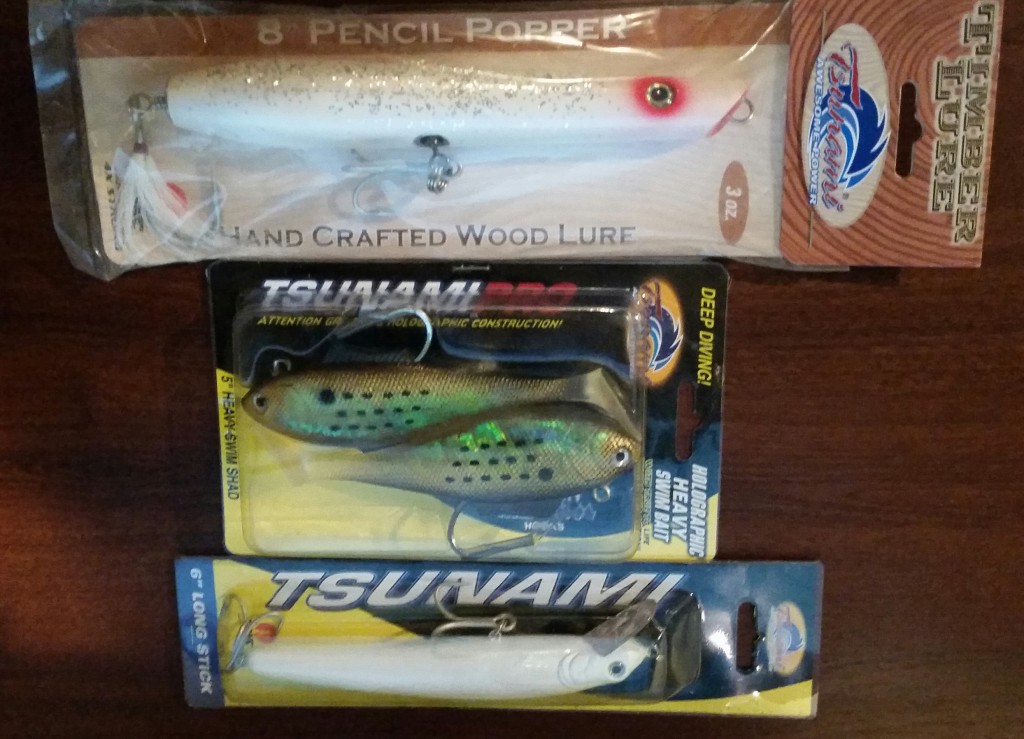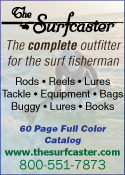I know many of you have been doing a lot of fluke fishing from shore in recent years. Some by choice and yes, some by necessity as bass as hard to find in the summer last few years in quite a few places. SJ Rod Guru Lou Caruso contacted me last week with an idea for a video review of a new Rod Geeks 8” rod that he felt was perfectly suited for fluke fishing. At $90 for a blank, I got a feeling its going to end up on many Christmas lists [youtube]https://youtu.be/ExFaMbNP_mM[/youtube]
Something in the Water….. by Charles Witek
Editor’s Note
This blog posts is by Charles Witek, originally posted on his site One Angler’s Voyage
I though we should share them so you can see that
A)There is something in the water that NJ “representatives” drink,
B) Tom Fote never meet striped bass he did not want see dead
C) For more on so called “recreational” representation read John McMurray new blog HERE…that will make your head spin. Remember the only good fish is a dead fish
SOMETHING IN THE WATER
There are a lot of refineries and chemical plants near the New Jersey coast, and it wasn’t too long ago that the Delaware River, which runs along the western border of that state, was so polluted that anadromous fish had to think twice before trying to make it upstream.
Sometimes, after coming away from a fisheries management meeting, you have to wonder whether some of that sort of stuff is getting into the state’s drinking water, because it’s hard to come up with any better explanation of why New Jersey is so often radically out of step with fisheries managers from the rest of the coast when it comes to conserving fish stocks.
That really stood out last October, when the Atlantic States Marine Fisheries Commission’s Striped Bass Management Board met to consider harvest reductions needed to rebuild the declining striped bass stock. Representatives from just about every state with a coastal striped bass fishery recognized that reductions were needed; anglers all along the coast overwhelmingly supported dropping the bag limit from two fish to one and increasing the minimum size from 28 to 32 inches.
However, the 28-inch minimum size had prevailed on the coast since 1995, and biologists suggested that, from a statistical standpoint, it made sense to leave the size limit alone. Managers took that advice and adopted such size limit which, coupled with a 1-fish bag, would probably reduce landings by about 31%, comfortably above the 25% reduction that was the minimum needed to reduce fishing mortality to the target level.
Thus, a motion was also made that would require that if any state proposed alternate regulations, such regulations would have “conservation equivalency” to one fish at 28 inches; that is, they would have to reduce landings by 31%.
Unfortunately, ASMFC had earlier voted to reduce coastal harvest by 25%, and the New Jersey commissioners would not let that go. Tom Fote, the state’s governor’s appointee, objected loudly, saying
“We just voted on a 25 percent reduction; and now because you’re picking out one fish at 28 inches, you’re basically saying that we have to have a 31 percent reduction, which is 6 percent greater than we voted on and we went through the plan. This makes no sense whatsoever…
“It might be perfectly acceptable for [another state’s] fishermen to have one fish at 28; and that is great, let them go one fish at 28; but we have to accommodate the fishermen in our state, the charterboat, the partyboat and the recreational guys, and the guys that fish from the beach. We need that flexibility as long as we make the 25 percent reduction. I didn’t [vote?] for a 31 percent reduction; I don’t think anybody around this table voted for a 31 percent reduction…”
For whatever reason, the management board went along, and ended up passing a motion that read
“to approve Option B-1, one fish at 28 inches, with all conservation equivalent measures equaling a 25 percent or greater reduction in harvest.”
It seemed that the New Jersey folks got what they wanted, but when the roll-call vote was taken, they still decided to vote against…
It didn’t take long to see where New Jersey was headed when it argued for the smallest possible harvest reduction, for in the months to come, when representatives of the northeastern states came together in an effort to maintain constant regulations throughout the region, all of the states from Maine to New York agreed on one fish at 28 inches for everyone. But New Jersey went its own way, playing with the numbers until they could find a way for their anglers to take not one striped bass, nor even two, on every trip, but three, one measuring between 28 and 43 inches, one at least 43 inches in length and, beginning on September 1 of this year, a third fish between 24 and 28 inches in length–a fish that, most likely, had never had even one chance to spawn.
Thus, while anglers in most other coastal states may take home only one adult fish, in New Jersey, they get to kill one average adult fish, one prime spawner and one immature bass that will never get to contribute to the future of the stock.
Because down in New Jersey, any fish is a good one as long as it’s dead…
That being the case, I wasn’t surprised to see, in the wake of the joint Mid-Atlantic Fishery Management Council/Atlantic States Marine Fisheries Commission decision to reduce summer flounder landings, that the Recreational Fishing Alliance, a New Jersey organization if there ever was one, put out a press release condemning such action.
The title was typical bluster: “Vote to torpedo recreational fishing community. Council and Commission turn deaf ear to floundering industry.” Even so, it was better than the text, which was little more than an extended, petulant whine, lamenting that the Council and ASMFC followed the scientific advice to reduce summer flounder landings in the face of a population decline.
To be fair, there weren’t any flagrant untruths in the release, although it skipped over so many important facts that the whole truth was still hard to find.
For example, it lambastes the Council for making a 29% landings cut, while ignoring the fact that a 43% cut was originally proposed, but Council and Commission staff, working with the members of both management organizations, found a way to pare that down by one-third in order to reduce any resulting economic pain.
That’s hardly turning a deaf ear to industry concerns.
The release says that
“12 members voted in opposition to a measure that would have led to a smaller, 20% overall reduction,”
which is true, but it failed to mention that the Council was legally barred from adopting harvest cuts any smaller than those recommended by its Science and Statistical Committee, which endorsed the 29% reduction.
Yes, there was a motion to remand the question to the SSC for further consideration, but that motion was essentially out of order, as it lacked any of the substantial grounds (SSC error, etc.) needed to justify such a remand.
Even had a remand occurred, the only way that the SSC could have limited harvest reductions to 20% would be to find that the science in the latest stock assessment was perfect—that there was no scientific uncertainty at all. And everyone–most particularly the SSC–knows that is not true.
The bottom line is that the 29% reduction was in accord with the best available science, and was clearly the right thing to do. It was overwhelmingly supported by Council and Committee members.
The effort to limit harvest reductions to 20% was effectively a New Jersey effort.
With respect to the Council, the motion to remand the question to the SSC was made by Jeffrey Kaelin, of the New Jersey delegation. The motion failed with only 5 votes in favor. Three of those votes were from New Jersey.
With respect to the Commission, the motion to remand the question was made by Tom Fote, the governor’s appointee from New Jersey. The motion failed when only New Jersey voted in support.
And even in the public comment period that preceded the vote, all three spokesmen who supported the remand came from—you guessed it—New Jersey.
Because no state but New Jersey tries so hard to kill so many fish. They seem constitutionally unable to comprehend conservation.
I’m not sure why that is.
I’ve spoken with folks from New Jersey–even have a handful of friends down there–who seem like normal people, with a normal desire to properly manage the fish that we pursue.
But I also know a lot of the folks who represent New Jersey on regional panels and in public forums, and they’re a completely separate breed, always trying to eke out a few more dead fish, regardless of the health of the population.
Maybe there’s something seeping into the water they drink that makes them think so perversely.
I don’t know about that.
But I do know that if they get their way, with stripers or weakfish, with fluke or with flounder, there will be a lot less in the water for folks to catch.
Win an Very Special Guppy Lure Custom SJ Pencil Popper
Let’s roll out a giveaway for this week and its a doozy. One of a kind custom beauty made by Hess brothers at Guppy Lures. But before we get to it lets announce winner of last week’s Tsunami Lure package. The winner is James Makris jpm661@gmail.com
Congrats and you have 5 days to email us your shipping address at info@surfcastersjournal.com
Today giveaway is truly special in every sense of the word.
Gorgeous Olive over Pink over White Canal Special Guppy Pencil Popper with yes, Surfcaster’s Journal logo! Holy Cow !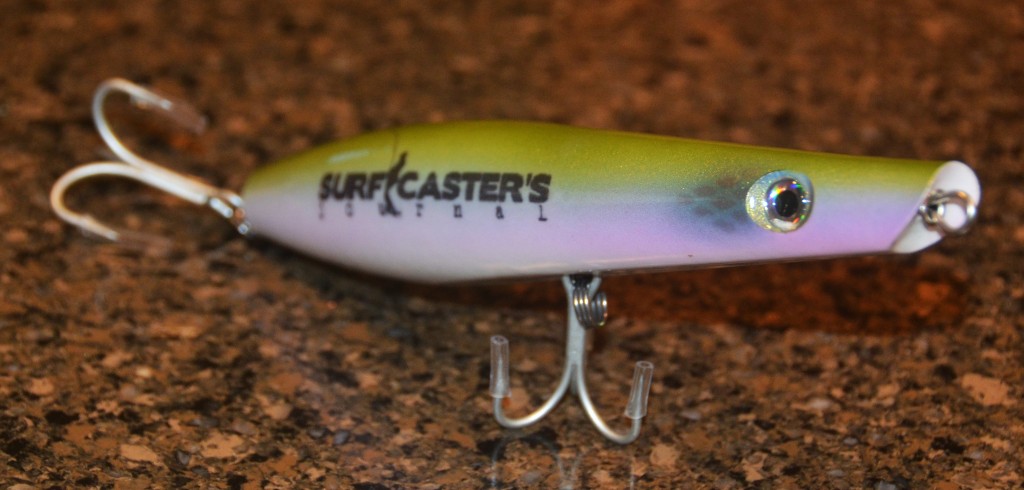
You can check out all the Guppy Lure products at
And if you want to learn about what makes Guppy Lures so revered, watch this interview with Wayne and Peter Hess, makers of Guppy Lures. Full version is in the issue # 30
[youtube]https://youtu.be/5JY9ByDGn9c[/youtube]
A Man And His Ice Cream
I don’t remember what year it was, probably 2005… my old fishing partner Dave Parrillo (he’s moved to Florida now) and I had been struggling for a few weeks fishing the shores of Rhode Island and we were looking for a change. We were getting solid intel from Nauset Beach on Cape Cod and we finally gave in to the temptation and set our sights on a beach we barely knew… on what would turn out to be one of the darkest nights of the year! The day before I had been talking with my longtime friend Alex from high school, he had been working on a charter boat docked in Rock Harbor and asked me to leave a few eel traps and some plugs on the boat—so we decided to kill two birds with one stone.
The weather was nice when we left Dave’s place in Warwick, RI; the sunset was streaming through a curtain of steel blue “Simpsons” clouds as we sped up 95 North. By the time we hit the Canal it was almost dark and the clouds seemed to get thicker as we neared the open Atlantic. Driving down Route 6, our minds raced with a mix of anticipation and questioning; questioning whether or not we could actually pull this off.
As we pulled into the lot at Nauset a hard onshore wind was blowing through the dune grass and small spits of sand were pelting in from the beach. Then it started to rain. We looked at each other with a smirk… Dave smiled and muttered, “Oh, what the #%$&!”
Undaunted, we suited up and set off down the beach hoping the breaking waves would reveal some structure below. Clearly, we should have left three hours sooner so we could eyeball the beach and find something that looked fishy, but I think (hope) that everyone has made a desperation move sometime in their fishing career and allowed the blinding promise of fish to obscure the vision of their common sense long enough to do something stupid.
I won’t draw out the play-by-play of a night that was doomed from the get-go, but we found what we thought was a decent bowl, fished it hard without a touch, moved down to the next one—with bitter winds and needlelike rain drops battling back—fished hard, caught nothing, repeat, repeat… and then Dave blew up his brand new custom rod.
We just shook our heads, but I think we were both happy to have a reason to head back, rather than be “the guy” who couldn’t take it. We headed back to the lot, which turned out to be a challenge in itself since it is hidden behind dunes that look like the rest of the dunes on the beach and it was so dark you could barely make out the horizon over the water. We eventually got back to the truck and laughed at ourselves. It was now around 1 a.m.
We drove north across the Cape toward Rock Harbor, when Dave noticed that we were dangerously low on gas. He again uttered his quote from above. We had to find a gas station, pronto. And with the very real pressure from the fuel light urging us on, we drove aimlessly toward 6A and thankfully, we found a White Hen Gas Station that was still open!
While Dave gassed up, I went inside to find something to quench my nagging sweet tooth, candy bars were not going to cut in on a night such as this. I peered through the glass on one of those sliding-top freezers and spied the perfect remedy—a Biggy Iggy.
For those of you who are not familiar with a Biggy Iggy, it is THE ultimate in packaged, one-handed, ice cream fantasticness. It is two HUGE, chewy, chocolate chip cookies between which gobs of silky-smooth and delicious vanilla soft serve are sandwiched. No, there is no dignified way to eat one. And yes, you automatically feel like Augustus Gloop (google it) when you bite into one as smudges of ice cream and melted chocolate chips festoon your cheeks, lips, chin and nose. Basically you automatically look like a four year old on his birthday—complete with wide eyes and plastic perma-smile.
I hopped back into the truck and endured the anticipated stream of ribbing from Dave, “When you get to be my age you’re going to be ONE FAT BASTARD!” “It looks like you’re REALLY enjoying that, that’s good huh?” “What are you seven!?” “Jesus, are you really going to EAT THAT WHOLE THING!?”On and on… but I barely heard him, all I could hear was the sweet musings of my ice cream as I continued to happily and excitedly devour it.
We arrived at Rock Harbor and I slung the plugs into one of the eel traps and carried them down toward the harbor on one hand while taking bites of my Iggy with the other. If you haven’t been there, Rock Harbor looks like it must have been a small estuary off of Cape Cod Bay that was dredged out and then built up for use as a harbor—something that would never be allowed in this day and age. The environmental impact study alone would probably take half a century! The parking lot butts up to typical wooden dock railings that dress up the top edges of huge rusty walls made out of what looks like corrugated steel on steroids. These walls have been driven into the mud below to keep the surrounding land from filling it in; It’s basically a deep pond surrounded by retaining walls, with a floating dock below.
It was dead low tide, so the water was more than 10 feet below the lot. We located the boat that Alex worked on and descended the rickety stairs to the wooden platform below. There was a single street light about 100 feet to the left of the boat and because of the height of the walls, a strong, black shadow was being cast onto the dock and there were assorted items—coiled rope, fish totes—scattered on the dock as well—a minefield of obstructions. We looked for an out-of-the-way place to put the stuff, we didn’t want to step onto the boat in case the Captain was sleeping on board. I spotted an open spot just to the left of the boat and walked over to set the stuff down. I leaned on a large wooden piling and skirted by some totes to set the trap down, but as I put my left foot down, I felt myself leaning. I had my Biggy Iggy in my left hand and I didn’t want to get it all nasty, so I reached out with my elbow to brace myself against the wall.
My foot continued to go decidedly downward as more of my weight began to pile up behind my elbow, then it began to slide down the steel wall; at roughly that same time I could feel a cool sensation rapidly running up my leg. I was so confused! A split second later, my right leg had folded up like a frog’s leg and my right knee was just about level with eyebrows! The cool sensation had now ridden up past my waistband and was traveling northward—fast! My body, thanks to the laws of leverage, had now layed over, my right foot clunked off the dock, my shoulder met the steel, I twisted and writhed in too-late protest. The cool sensation rapidly closed the gap between my belly button and chin and right before I FINALLY realized that I was falling into the water I looked upward fast and gulped one quick breath of air as my head plunged below the oily, stagnant, disgusting water leaving my hat floating in the ripples.
The water was surprisingly deep! Because I had fallen in such an awkward position my momentum carried me down at least two feet below the surface and I never touched bottom! As I was swimming for the surface, I found that I was having some trouble paddling with my left hand… then it hit me. My ice cream! NOOOOOO!!!! Mercilessly, I let go of my half-eaten treat and burst through the surface to see Dave’s face, right at eye level with mine. He was crouched down on the dock already in position to haul me out. “What the HELL are you DOING!??!” he said in hysterical confusion. I could barely breathe because I was laughing so hard. He grabbed me by the armpits and helped me back onto the dock. I said, “I didn’t do that on purpose! I couldn’t see where the dock ended because of that *&^% shadow!”
Dave just shook his head and said something like, “You’re a @$%# idiot!” I can’t remember a time where I laughed harder. Even as I was standing naked in the parking lot putting on the dry clothes that I, thankfully, brought with me—I could not stop. My whole left forearm and elbow looked like I had done a gainer off a skateboard and stuck the landing directly on my arm, but all I could do was laugh. The whole ride home, we’d laugh until it was quiet and then we’d look at each other and as soon as we made eye contact we’d burst into hysterics again. It was the kind of laughter that hurts—your throat is soar, your sides hurt, you can’t breathe and you can’t stop! There’s no real lesson in this story, but one of the few things in life that you can’t buy, you can’t seek and you can’t replace is an honest to God, true friend. I’ll never forget that night and I hope that one day when Dave is back up here in the Northeast we can go out and have another adventure—whether it ends in success or failure… well, I couldn’t care less.
Large Bass on Chunks, with Billy Fischer
Not everyone throws a chunk like Billy Fischer but I am a big believer that you should never stop learning. All I can tell you is that this particular day last fall fish were at his feet but I have not seen one (and there were more than a dozen as you can see in the drone shot ) plug fisherman even hook up, never mind land a fish
Enjoy what is to come, sooner better than later
This originally appeared in Episode 1 of SJTV in January 2015 . Hopefully more to come this winter
[youtube]https://youtu.be/37RLqEhHmiM[/youtube]
Any Given Sunday
We live in strange times for the surfcaster. A dwindling population of stripers has shown that it will set up shop in just a few areas each season. And as that population has continued to decline those areas have become more and more concentrated. This has given many striper crazies the travel bug and plates from all over the coast can be seen at most of the famous striper outposts that harbor a (usually) consistent bite.
This fact has also brought out the braggarts, people who use social media to make sure that people everywhere know that they are catching when the going has gotten tough for so many others. Closer looks reveal that many of these proud Mary’s cannot be taken seriously as they recycle new shots of old fish to keep their legends alive. What they don’t seem to understand—or maybe they just don’t know that they should care—is that they are placing a big, red target on their backs and it will not be long before their own hallowed grounds are overrun by the hounds looking to exploit whatever work they’ve done to keep themselves catching.
I move around a lot, fishing the waters from Cape Cod to South County Rhode Island and even moving north when conditions line up. Fishing mostly within a “doable” drive of the Canal has had a strange effect on the way people fish on my local turf; the Canal is easy to predict and relatively easy to fish and a lot of guys have migrated there, seemingly permanently. But the last two seasons—this one especially—have been inconsistent, the four day tides that used to be melees are now usually only really good for one day; the others fall somewhere between ‘working for a few’ and ‘skunk’. This has had a sort of “reverse osmosis” effect on many of the surf spots I frequent.
I’m starting to see lights again. Which is kind of bittersweet; on the one hand it does my heart good to see that there are still some surfcasters left out there who don’t mind working for them—but on the other hand, it has forced me back into stealth mode.
Being stealthy is more important than it ever was. Before the Canal started to blow up with big fish, bass could be caught just about everywhere and just about any time. Sure, there were nights and even weeks where the action was very slow, but most areas, at least within my range, had resident fish every year. It was so easy to take for granted, and there wasn’t much worry about being seen catching (unless the fish were big) because odds were that the other lights on the shore were catching too.
It’s not like that anymore. Now it’s all about tide windows and very specific slots within the spots—places that feature the perfect blend of current, structure and depth. And even when I feel like I know the formula, on all but the best nights, there’s still a lot of waiting between fish. But these days, when I see lights, I hardly use mine and I don’t take photos—it’s just too risky.
The exception seems to be Sunday nights. The end of the weekend coupled with the beginning of the work week seems to keep nearly everyone off the water. I never used to fish Sundays either unless I was on a hot bite and didn’t want to lose a hold on the pattern. It’s strange to say, but fishing on a Sunday night makes it seem like 50 percent of the world’s population has been beamed to another planet. There are very few cars on the road after 10 and the shore seems to be soulless. It’s the only night of the week when fishing the surf feels like it did every night 15 years ago when, even on the Canal, seeing the lights of more than three or four people was rare—in the surf I almost never saw another light.
Of course, this Sunday phenomenon is negated at the famous crossroads of striper fishing, there are guys fishing the Canal at every hour of every day and I would guess that, especially as we near September, places like Montauk, the Rhode Island Breachways and Block Island have their own contingent of steadies that are out there no matter what the next day has in store. But if you’re finding yourself being forced into ninja mode like I am, take advantage of the rhythm of the American work week, Sunday nights feel like they could be set in 1940 or 1840; and you don’t have to hold your breath for 20 minutes—waiting to see another—when you’ve had to turn on your light.
New Lightweight top from Guy Cotten
The crew from the Fisherman’s Headquarters in Ship Bottom NJ – www.fishermansheadquarters.com have been working with Guy Cotton for a while now as advisers on new lightweight Guy Cotten Splash Top. They told me that the top has finally arrived in stock and we thought we’d share some info since many of you are big fans of Guy Cotten products.
you can get all info, purchase price and availability by clicking right here
http://www.fishermansheadquarters.com/guy_cotten_splash_top_pullover.htm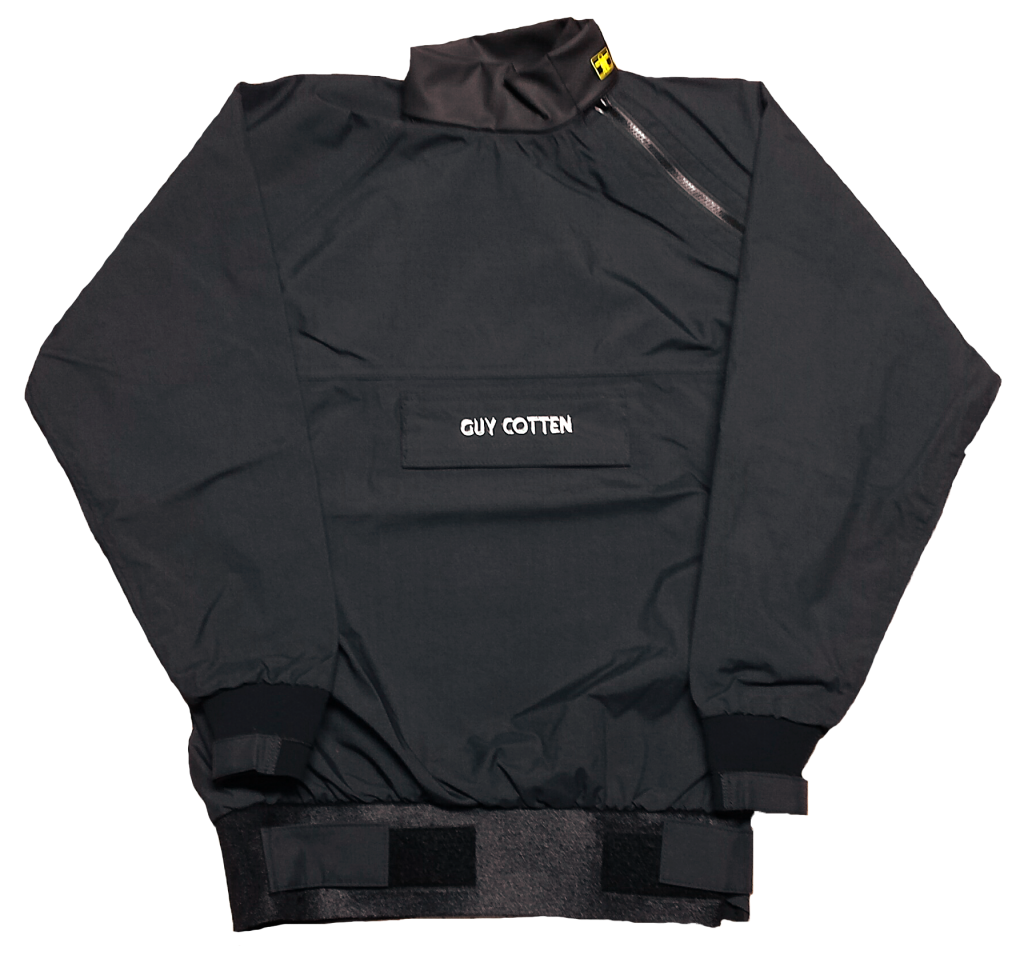
The Guy Cotten Splash Top Pullover is the ultimate, no-nonsense, light weight, affordable surf top!!! It’s specially designed for anglers that want minimal bulk and max maneuverability. It is great for any surfcaster, especially those that fish in wetsuit and need a quality wind breaker. It is also a phenomenal top for sailing and boating.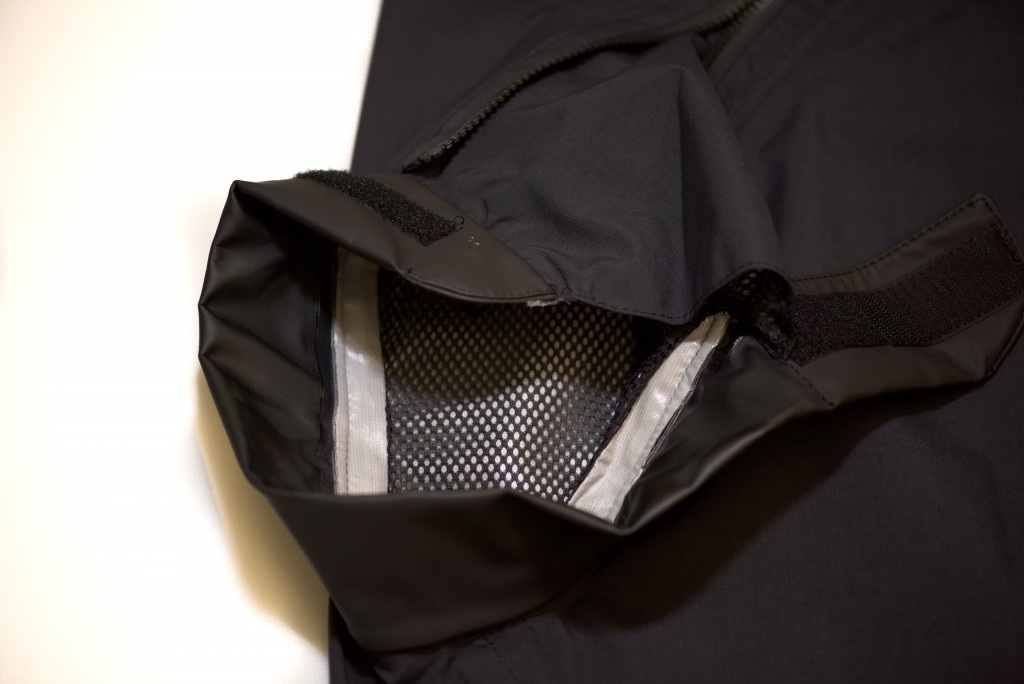
Guy Cotten introduced the Surf Top (2007 Guy Cotten released the Surf Top 800 Series and then in 2010 the Surf Top 1200 Series) and it grew a cult following of hardcore surf anglers who demandperformance top quality gear. Over time Guy Cotten has listened to their customers and collected feedback/requests. Patrick at Guy Cotten complied everything and worked closely with our own store manager and angler FishHead.Greg to perfect this Guy Cotten Splash Top also called the Montauk Splash Top. It is a new lightweight and affordable pullover designed for a variety of uses. Greg fished it hard all last fall on the boat, on the beach and on the jetties. He was spotted in Sept/October in Montauk consistently getting into fish with his white prototype Splash Top. Everyone was asking about it. Well after extensive testing and a few minor changes, it is finally here!
The Guy Cotten Splash Top is a waterproof, lightweight, durable, highly breathable and comfortable pullover offering maximum freedom and protection. All of these key features were requested and Guy Cotten delivered!!! Most of all the favorite features from its predecessor stayed; however, anything on the original Surf Top that caught water and restricted movement was eliminated.
Guy Cotten Splash Top DetailsHere is a breakdown detailing every aspect of the Guy Cotten Splash Top:
▪ FABRIC – The pullover is made from a similar fabric as the Guy Cotten Surf Top yet lighter and more supply. This new material Sport Pro is top of the line and offers extremely high performance yet still at a reasonable price. 100% water proof and highly breathable! Guy Cotten stitches and reinforces every seam then fully heat tapes the connection to totally waterproof the top and have the utmost strength and longevity. The jacket is lined with open porthole mesh to provide wicking action keeping moisture off of the skin allow for comfortable.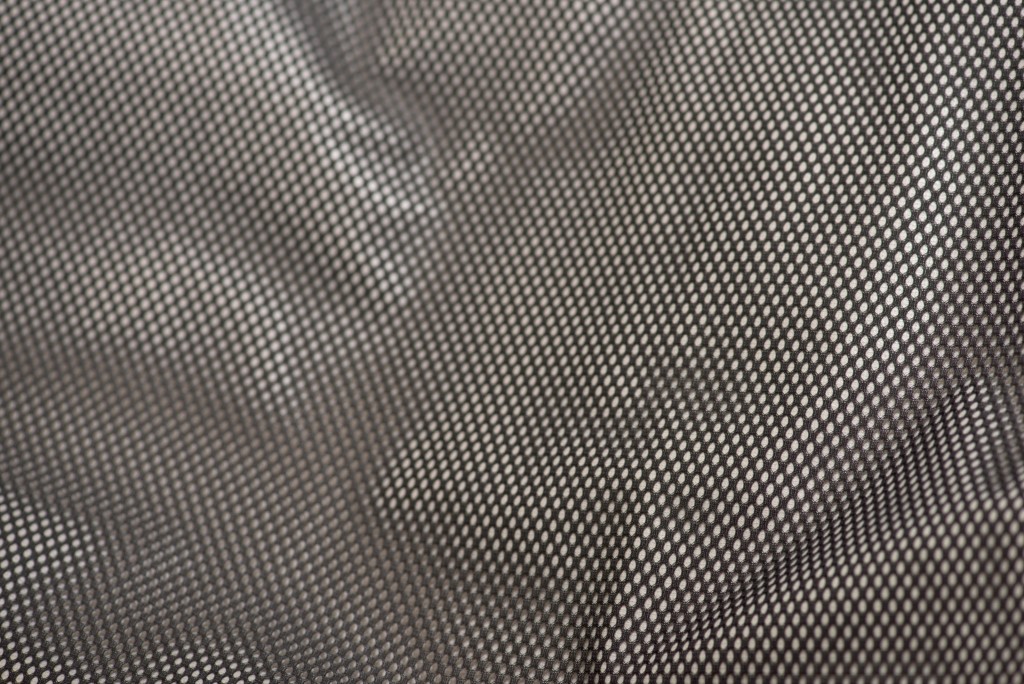
▪ NECK – New hood-less neck design has diagonal (chest/shoulder to lower neck) nylon zipper which is gusseted for easy on and off. It also is great to open for maximum draft during strenuous activity to vent heavy perspiration and control body temperature. The neck’s polyurethane collar material is soft and comfortable on the skin. It is easily adjusted with a velcro flap to snug and seal out water.
▪ WRISTS – Eliminated the bulky double cuff which caught water and hindered swimming and paddling ability. The newly designed cuffs are unique tapered cut neoprene wrist that have an adjustable velcro strap to tighten and seal water out. It is easily loosened to offer max comfort. The Guy Cotten Splash top has much less bulk in the wrists making it a great choice to wear overtop of a wetsuit and it is also great to wear when kayaking.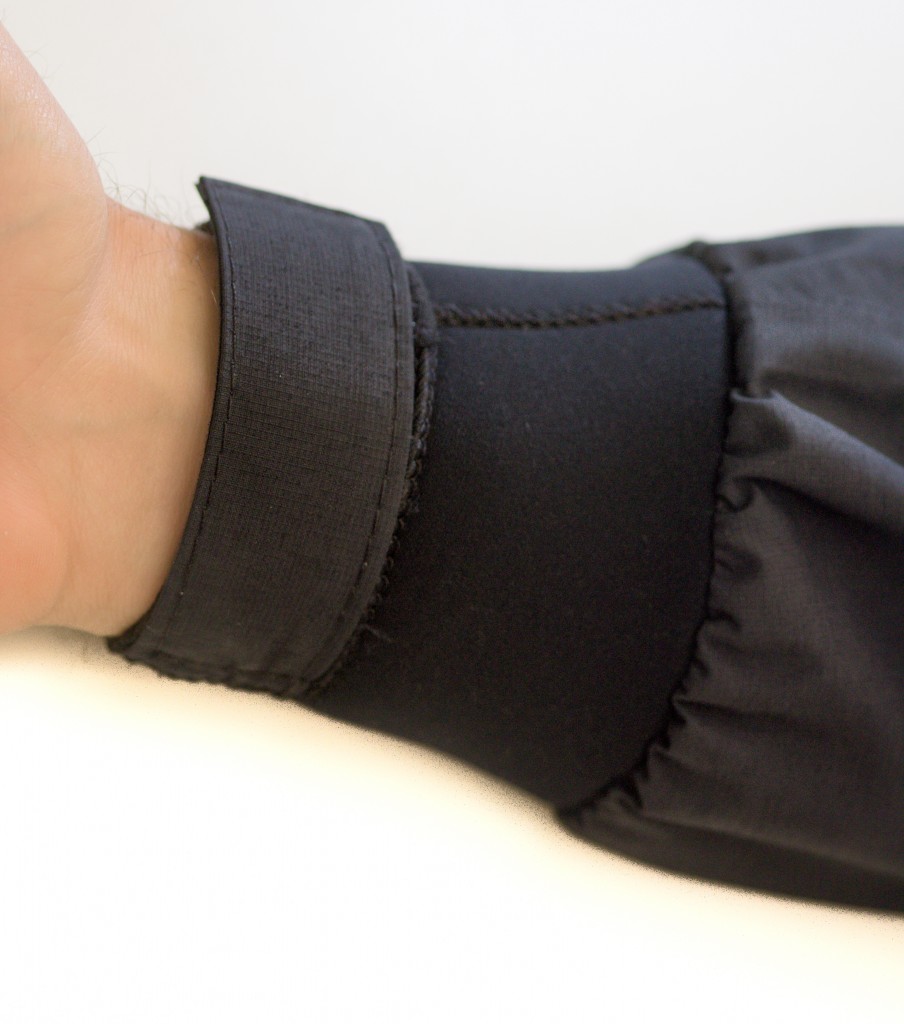
▪ OTHER POINTS – The Waist has a secure sealing gusseted neoprene waist band with two velcro adjustments straps. The neo/velco waist closure seals the Splash top on waders or a wetsuit. The Kangaroo pouch on the front offers easy to access and convenient storage. It has a fold style flap closure (“Guy Cotten” embroidery) with velco to keep out water. The Upper Back has a loop hook with (“Guy Cotten” embroidery) to easily hang dry. The Arms and Arm Pit have a unique fabric cut to best contour the curves and allow for arm freedom and ultimate comfort while less bulk.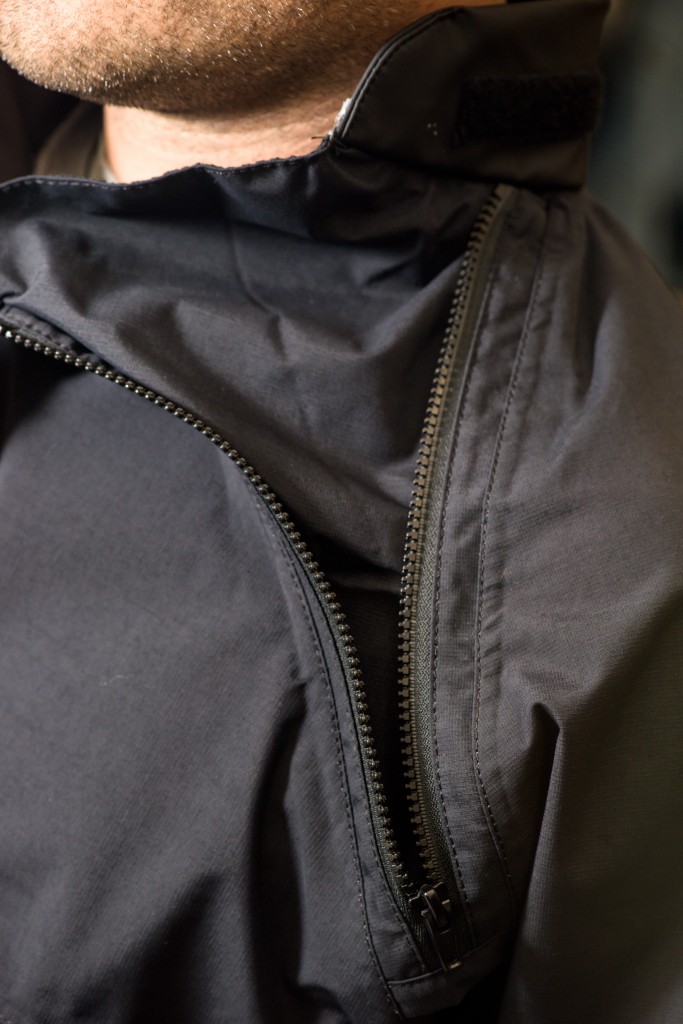
This Guy Cotten MON Montauk Splash Top is available in black or high vis-red. Please call to special order red.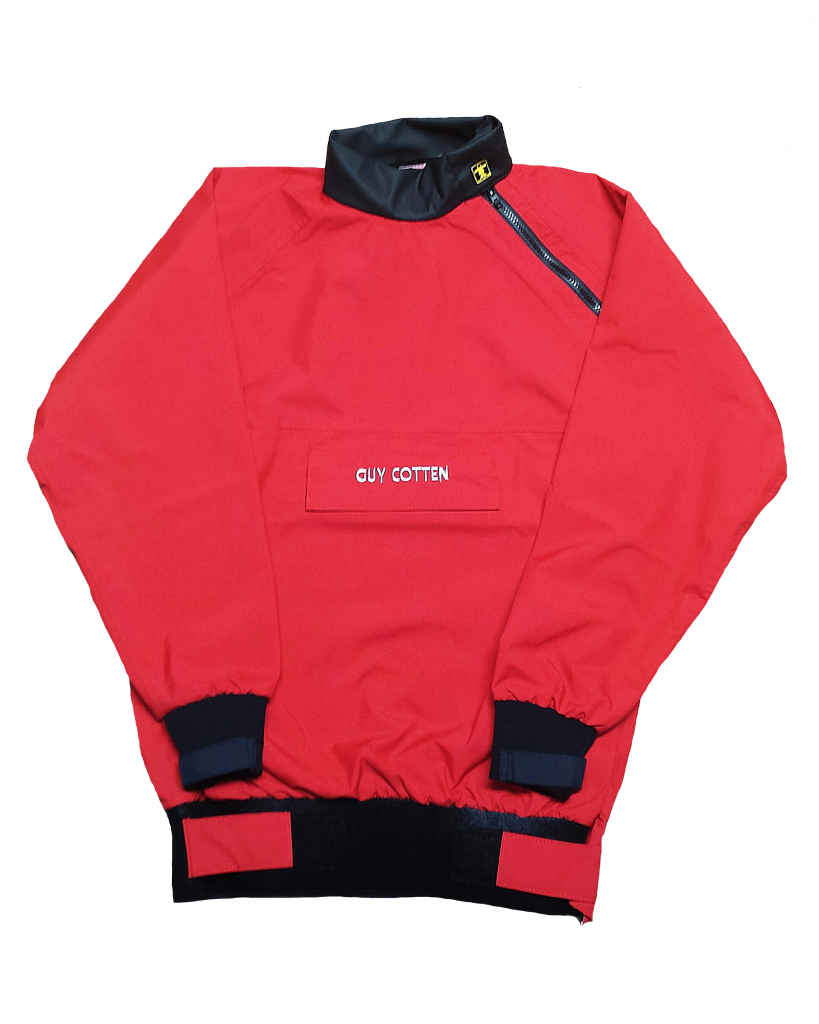
Tsunami Lure Package Giveaway
The winner of Gibbs giveaway is
The winner of Tactial Anglers giveaway is
Our sincerest thanks to crew from Gibbs Lures and Tactical Anglers for making it possible
I took a quick trip to Cape Cod Canal yesterday to shot bunch of videos with SJ Editor Dave Anderson. The fish in the canal did not cooperate on the morning tide but it was still nice to see some friends.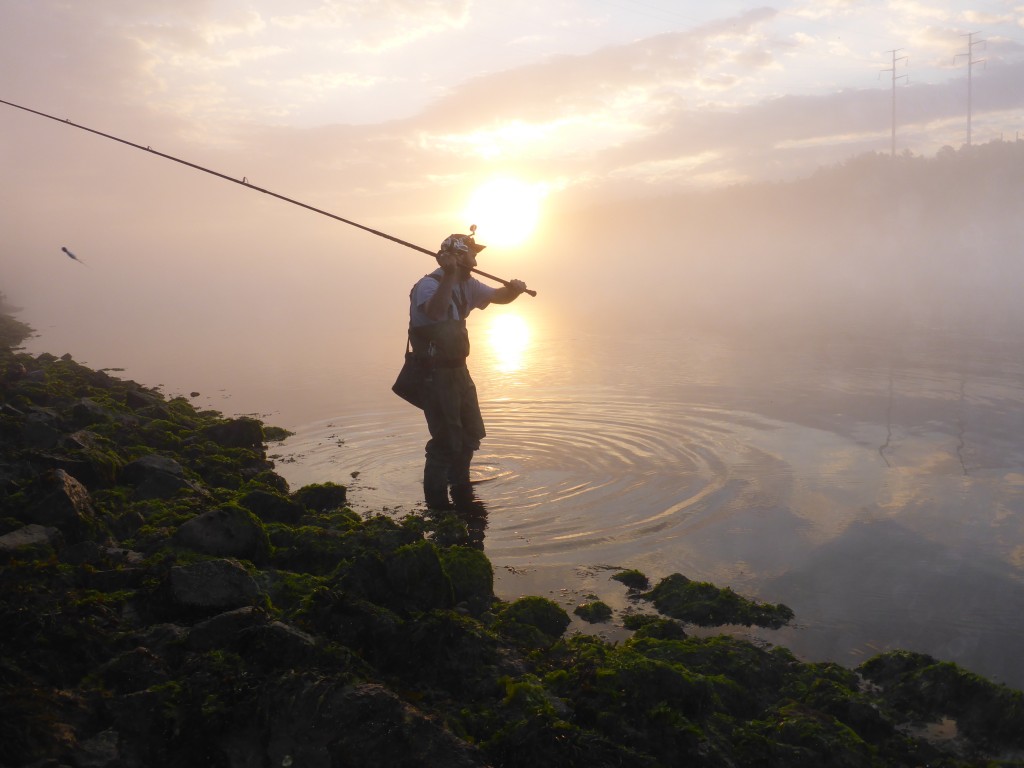
Today’s giveaway is a courtesy of Tsunami
The winner will receive
3 oz Tsunami Timber Pencil Popper
6 inch Tsunami Long Stick Swimmer
2 pack of Tsunami Pro Deep Diving 5 inch shads
Sealing The Deal
I am fresh off a relaxing family vacation to Cape Cod; the former surfcasting capital of the world and home of some of the tastiest looking sand beaches you’ll find anywhere on the planet. I have been visiting the Outer Cape, on and off, since I was a little kid and fishing the beaches was one of the things I used to look forward to most—I have gone for a week each of the last four years and I have brought a rod with me exactly zero times. You may be questioning my grit as a surfcaster or my devotion to the sport—but unfortunately it’s not that I’m going soft, it’s that I have learned that it’s just no longer worth my time.
On our first day, we headed to Coast Guard Beach in Eastham; this beach makes up the northern edge of the famous Nauset Inlet and then stretches two or three miles before being shadowed by the majestic dunes the Cape Cod National Seashore is so famous for. As we picked our spot among the sunbathers my mind slipped into overdrive and went through an involuntary rundown of the tide, wind, current structure and wave action. At roughly the same time my conscious mind was running through stories I’d heard or read by many of the surfcasters that made their names on the Cape beaches from the 1960s through the early 2000s.
By chance, (or was it?) we sunk our umbrella right in line with a cut in the offshore bar. The tide was low and coming in, a quick scan with the Costas revealed that a deep hole accompanied that offshore cut and a long finger bar reached out to meet the water flowing in from the Atlantic. Words from the late Tony Stetzko began to float through the back of mind as I walked through the shallow cut that was carved by the incoming water as it eroded the base of the finger bar and spilled over into the next bowl. I remembered him telling me about some amazing nights where big bass were slurping sand eels in a spot just like that. Dozens of fish, all over 30 and some over 40 working that little nearshore jet of current—their backs fully exposed—a swimmer and dropper reeled with the rod tip almost jammed into the sand getting eaten almost every cast. And when the school cleared, you’d drive down to the next bar and find another pile of fish ready to play.
I am not a sand fisherman. I’m not saying I can’t do it or haven’t, but I like my boulder fields and I like my deepwater rock formations. But as I walked out onto that finger bar and saw how steeply the water dove off from inches deep to well over 10 feet, my brain was on fire—it took some serious willpower to keep myself from playing the fisherman’s version of air guitar as I placed imaginary casts in my head. It was one of those places where you look and you just know that fish would be there—or, rather, should be there.
The current, the structure, the exchange of water between the ocean and the trough, the water jets rushing downtide between the bowls… sheer perfection. I really wished that I’d brought a rod… but the one thing I’ve left out of is that there were four huge seals and a smaller harbor seal swimming with the sunbathers in that hole. Looking south, the next bar was a “table top” (not connected to the shore) and there were easily 200 seals basking on the sand and another 50 sitting submerged with their heads poking out of the water like turtles, gawking at the gawkers shooting pictures.
As the week progressed we hit Lecounts Hollow and Marconi Station Beach—each of them had their own angling charm and their own armies of seals. When I visited those beaches at dusk I saw a single caster fishing with a small panel of seals hoping he’d luck into a fish so they could take it. People have told me that the seals know to follow people carrying surf rods and now I’m a believer. I was able to talk to one of the surfcasters, he told me that it has become a game of perseverance on the Cape beaches, you have to fish a lot of nothing days and nights to get into a few fish for the season. He did tell me that the beach I was walking had a good shot of fish the night before, but it was all seals after that—he added that a fish over 20 pounds would be considered extraordinary these days.
There are a lot of emotions that surface when I walk any of the Outer Cape beaches, they will be forever tied to my soul and childhood. I remember in all of the years we went between 1990 and 1998 I saw FOUR seals and they were all together in one spot as I was walking out to Nauset Inlet. When I see hundreds and thousands now it kind of breaks my heart. The Cape used to be known for its fishing and anyone had a decent shot off of those beaches. I remember seeing dozens of buggies with rods in the bumpers, big fish in the coolers at the shops, photos galore on the shop walls and now, there is no draw for surf fishermen on the beaches. I have no doubt that there are some hardcore locals that have figured out how to fish around the seals, but for average Joe or even the seasoned traveling surfcaster, the only things left of those bygone years of world class striper fishing are the stories and the memories. Too many seals is no good for anyone—I hear rumors that the State may step in to thin the herd a bit, but until someone is killed by a great white in plain view of thousands of vacationers, I doubt very much that any action will be taken. I didn’t even get to enjoy those great years on the Cape and I miss them, I can only imagine what it must be like for the guys who actually lived it.
Bonefish Dreamin’ by Jerry Audet
This is a blog post by guest author and SJ subscriber Jerry Audet
My Bonefish
“It’s too deep, and I can’t see a damn thing,” I said out loud.
I was late; Carly and I had gone out for dinner and time had just gotten away from me. My mind was a little foggy from a long day on the water, but I figured I’d work my way across this relatively deep flat, and keep my eyes out for cruising fish trying to snatch up their last meals as the day waned into rosy twilight.
I “hustled” across the grass flat in nearly waist deep water, dragging my feet in an effort to keep myself from becoming a stingray victim. The long, waspy mud trail billowing behind me gave away the direction of the current. It was deceptively strong, and I was tired from multiple ten-hour wading days. This, and my overly-full belly stuffed with crab cakes and roasted brussel sprouts, was making my navigation to the edge of the grass more difficult than in days past.
And I was nervous. I had seen two sharks over six feet long in this exact location earlier that day. A good sign of life, sure; but for me as a Yankee, with little shark experience, it was a bit harrowing.
No doubt about it, I really didn’t have any idea what I was doing. I mean, I know how to fish, and I can cast a fly rod well enough to hold my own, but before this trip, I had never flats fished before. All I really knew was I had spent a lot of time, effort, and money on this trip, and I REALLY wanted to catch a bonefish. All the stories I had read, all the videos I had watched- they all pointed to the bone’ as the ultimate fly-rod quarry. I wanted to experience that.
I had chosen this flat from scouring Google Earth, because I felt it looked “fishy”. No one told me to fish here; in fact, I couldn’t get much information out of any of the local shops of where to go (what to buy, sure, but where to go- not so much). I ended up just falling back on my experience.
Experience that had been failing me over the last five days.
I couldn’t help but think about this failure, as I shuffled along, armed with my new 10-weight fly rod, after having exploded my 8wt with a heavy crab pattern the day before.
“Tonight’s the night,” I thought to myself.
“I can feel it”.
I arrived at my destination, and began to strip off line. Here, at the border between hard, light sand and soft, dark vegetation, the water was shallower and clearer. I found myself standing in less than knee deep water. There was a solid 10-15mph wind coming over my non-casting arm, and resolutely turned to face it. The sun was low behind me, and the combination of this with the wind meant all I could see was about six feet in front of me to the edge of where the grass abruptly ended, and sand began.
“Guess I’m blind casting,” I whispered into the breeze.

This sandy trough, about 3.5 feet deep, traversed along the edge of the grass flat between the bridges. 10 to 30 feet out from the edge more grass “pot holes”- some up to 15 feet in diameter- dotted the whole area going out at least a quarter mile. It was full of life, with brightly colored bait fish, various sea-stars, urchins, crabs, and other small and medium sized crustaceans. I had multiple encounters with a large loggerhead turtle here in the days prior, who was feeding on conch, and I was in love with the spot.
But it still hadn’t produced for me, and I was getting frustrated. The fish were there; I had had two follows and seen two other bonefish, but no hook-ups. Undoubtedly even getting a bone’ to follow your fly the first few times you go out is an accomplishment, and I was trying to keep this in perspective. However, anyone who knows me well will not find it at all surprising that I really could not be happy with this “almost” attitude. But I had made the decision not to hire a guide, as to me, it wouldn’t be satisfying unless I could find, hook, land, and release the fish on my own.
All this was going through my mind for the millionth time as I finally started to cast. I started to isolate spots I figured could hold fish- small rocks, pot holes, grassy patches, a big sponge, a funneling area of soft bottom, etc. I’d cast to all of them 2-3 times. Then I’d move. Being out of the current now, I’d let the fly sink completely, and then painstakingly drag it back to the edge with slow, purposeful strips, adding in the occasional “pop”. When it got close, I’d lift it up slowly, pulling it out of the grass.
I worked a merkin for about 20 minutes, as it was the only fly that drew any interest from fish on the previous trip to this flat, but it was tiring to cast with a 12 foot leader and 15 mph wind, even with the 10wt. I decided my wrist and hauling arm needed a break after so many days of casting, and since I wasn’t catching anyways, I figured I’d try something else. I dug around in my fly box, before settling on a Petersons spawning shrimp I had bought a few years ago at an Orvis outlet. I had intended on using it for carp, but the fly had gone un-used. I bounced it in my hand. I liked it’s “action”, and the coloration was good for the light bottom I was casting into.
I tied it on with a loop knot, and continued ever so cautiously progressing along the edge of the grass as the tide continued to rise, blind casting to different structure points.
As the sun started to really get low, I arrived at a spot I had identified previously. It looked like a fish magnet; I had not caught anything there yet…but it just felt like it had so much potential! This “micro flat” contained a small point jutting out from the turtle grass towards a large circular grassy area within easy casting distance (50-60 feet). The cut between me and this patch of dark bottom was a shallow trough, maybe 20 feet across, strewn with coral fragments and pebbles. I stood on the edge of the point, and cast my little fly directly into the grass.
Naturally, it hung up immediately.
I rolled my eyes, and stripped it hard out of the grass, with a couple of long, hard pulls, quickly dumping it into the sand trough. I then let it settle, glancing off to the towards one of the bridges as a small green turtle popped it’s head up, exhaling sharply. I watched its’ head dissappear, and then turned back to my fly.
I gave it a little twitch. Normally, it’d be covered in grass, but I could tell it wasn’t because there was very little resistance on the line. I then proceeded to just slowly pull it across the bottom, with intermittent quick twitches, trying to envision it underwater acting like a injured and fleeing shrimp.
As I approached the edge of the grass, no more then 15 feet from where I was standing, I felt a slight…something. It wasn’t a “hit” or a “bump” or “weight” or anything like that. I can only describe it was if someone had taken their hand and pushed water at my fly hard enough to send it rolling along the bottom, and the feeling that that would impart on the line in my hand.
I strip set the hook hard.
The weight was immediate.
I had hooked…something.
I couldn’t see it, and at first whatever it was decided to do a slow, soft arch around me moving from right to left. I raised my rod high, bright blue fly line scattered all around me, sun glinting off the water leaving me blind to what was happening. As I watched the line cut the water lazily, I started to think perhaps I had a small ray or something like that. I took a tiny step forward in an effort to get a look.
A sudden rapid change in direction and in 3 seconds all 80 feet of my fly line was gone, and in another 5 I was 30 yards into my backing. I desperately tried to adjust my drag, and over tightened it to the point my rod sagged against the pressure. Fearful I would break the 15lb leader, I backed off the drag and palmed the reel as the line continued to melt from the reel. The handle smashed against my hand and I recoiled.
My heart was pounding now; I had planned for that run, but I was not prepared for it. As the reel finally slowed I was able to grab the handle. Then, the line goes just about slack. I start reeling like mad, mumbling curse words through my clenched teeth. The fly line makes it back onto the reel, and still the line is barely taught.
An explosive burst of power and I have to release the reel handle. All the fly line and at least 40 yards of backing disappear in a blink of the eye.
Again, I work it all back, under more resistance this time. And again, as I get the fish within 20 feet of where I’m standing, it blazes back towards Africa like no fish I’ve ever experienced before.
They say you’re never ready the first time, and I definitely wasn’t. I can’t help but smile now just thinking about it. You always remember your first time.
This pattern repeats once more: I scramble to regain line, the fish then blazes it all off, and after at least 3 minutes I still haven’t seen the fish. I’m talking prolifically to myself now.
“Don’t play it too hard, you’ll pop the hook”. “No you idiot, turn the rod, keep pressure thisway”.
There was a fair bit of profanity mixed in as well.
“Has to be a bonefish,” I begin to recite. It turns into a chant. “Please be a bonefish, please don’t be a barracuda”. “Please be a bonefish, please don’t be a barracuda”. “Please be a bonefish, please don’t be a barracuda”.
I reach a stalemate with about 20 feet of fly line out; the fish won’t come closer, and I won’t give it an inch. After another thirty seconds or so, I relent and she takes a another short run, before finally yielding.
I will never forget the next moment for the rest of my life. The glint of the sun on the choppy water, the dark grass underneath, pastel clouds in the background, the long, slow curve of the rod- and the bright flash of an angry bonefish with a bright little pink fly sticking in the side of it’s lip.
My stomach goes into my throat; I can hear my rapid heart beat in my ears. She’s the most beautiful fish I’ve ever seen. Yes, earlier this year I caught a 47.5″ striper. That fish was monsterously powerful. But this fish was…….incredible……
I’m so nervous now that I’ve seen her, I let up on the pressure, and she goes again, but doesn’t even get the fly line off the reel. I try to maintain my composure despite knocking knees and work her back quickly.
Then the game of actually grabbing her begins. Around and around she goes, making me spin 360 degrees several times. I don’t dare pull my knot through the first eye for fear she runs again, and it catches, breaking my line and setting her free. So I have the rod at a precariously high angle, and am trying to grab at my 12 feet of leader.
Twice I grab, she thrashes, and I drop it. I don’t think I was breathing the whole time.
Finally, I get a solid hold, and slide her towards me. As I slip my hand under the belly, I let out a soft, long “YYYEEESSSSSSSSSsssssssss”.
I dropped my rod in the shallow water; screw it, let it float away, I don’t care. I hold her, carefully, and let the goosebumps run up and down my spine. What an amazing animal; what an amazing moment.
I held her in the water and tried to take a few quick pictures before unhooking. Being all alone on this particular evening, I had to figure out a way to get a couple “selfies” too. I decided to gently cradle her in my arms and try to snap a few that way. I gingerly lifted her 26” into my arms, noting her panting lips, mirrored sides, and extremely large, dark, forked tail.
Unfortunately, none of the pictures came out that great. I was too concerned with making sure the camera worked to think about the ugly faces I was making. Or water on the lens. Or the angle of her body. After a few quick shots in rapid succession, I placed her back into the water. I rocked her gently by her tail, washing water over her gills, beaming ear to ear.
Before I let her go, learning from my terrible pictures in the surfcasting tournament, I decided to take a short video. I didn’t even know what to say.
After I finished taping the release, I just remained motionless, kneeling in the water. After a few moments passed, the gravity of what just occured sunk in, and I snapped to my feet to continue casting. However, I didn’t get a single follow or nibble after that. The only fish I saw was a large spotted ray, gliding along the grass edge looking for crabs. I stepped aside to let him pass, and as he did, I decided to call it a night.
I had done what I had come to do.
[youtube]https://youtu.be/VJ8WSTcp0VE[/youtube]
Editor’s note :
This blog post originally was published at http://www.trebleandbassfishing.com
Thank you for sharing Jerry !
Zeno

